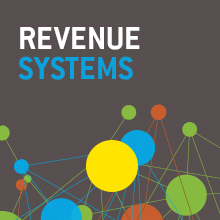Marketing Automation has been around since the 1990s. Back then, the focus was on automating email marketing— managing the development and delivery of emails to target lists at scheduled times. Over the decades, software developers expanded the capabilities of Marketing Automation to meet the requirements of a variety of marketing functions and users.
Today, Marketing Automation refers to a broad range software technology for marketing and it is an important element of closed loop marketing. Its evolution has raised many questions about what it is, what it does, and whom it benefits.
So, what IS Marketing Automation?
This question is easier to answer by debunking some myths about Marketing Automation.
Myth 1: Marketing Automation is glorified email marketing.
Early on, the cornerstone capability of Marketing Automation was mass email campaigns — managing email development, personalizing content, sending and tracking delivery, opens, bounces, and clicks. While some vendors still offer this as their core product, other providers have moved towards a suite of capabilities, including lead management, contact management, campaign management, and reporting and analytics.
Myth 2: Marketing Automation is a “one-way” outbound channel.
The explosion of data, along with concepts like “real-time” and “lights-out,” fueled the expansion of Marketing Automation capabilities. Marketers can now use the customer’s profile, preference and behavior data to develop more customized and personalized experiences. As a result, today, Marketing Automation is no longer just a tool for outbound email campaigns. It enables marketing teams to deliver closed loop marketing by using data to plan and monitor inbound campaigns, including SEO, paid media, and social media programs.
Myth 3: Marketing Automation is “set it and forget it.”
This myth is half-true. Marketing Automation allows marketers to create rule-, score-, and time-based workflows and campaigns that run continuously or “lights-out”. While marketers could create automated campaigns to “set and forget,” they wouldn’t take advantage of a key capability Marketing— reporting and analytics. Marketing Automation delivers value when it leverages “big data” and business intelligence to deliver more informed campaign strategies or when it’s used to test hypotheses about the audience, content/message, product or offer.
Myth 4: Marketing Automation is just for marketing.
It’s true that a marketing department benefits most from Marketing Automation. However, a well-designed lead management program, executed through the system, can nurture prospects and develop better quality leads for sales. Smart and strategic usage of Marketing Automation can align marketing with sales strategies, which ultimately increases revenue. Additionally, some Marketing Automation software include CRM or fully integrate with leading CRM systems, further aligning marketing with sales and enabling one view of the customer across the lifecycle.
Myth 5: Marketing Automation is for large companies.
Thanks to a proliferation of software vendors, B2B and B2C companies of all sizes can choose and implement sophisticated automation software. Typically, smaller companies seek a tool that handles a variety of common functionalities. Larger companies desire a suite of capabilities for more complex programs and can support different departments and marketing functions. Regardless of size, effective and successful marketing automation implementation and usage requires strategy, data, people, process, and the right technology.
Myth 6: Marketing Automation is the holy grail.
While Marketing Automation has expanded its capabilities over the years to speed up its time to value and increase revenue, it is only one component of a Closed Loop Marketing Architecture ™ (CLMA). A complete CLMA is comprised of five systems, including Marketing Automation, Salesforce Automation Omni-channel systems (websites, social media, paid media), Data Management, Business Intelligence, Reporting & Analytics. These five systems work together to automate an aligned marketing and sales process, execute, measure, and optimize campaigns, accelerate sales cycles, and ultimately drive revenue generation.
Today, Marketing Automation refers to a wide spectrum of capabilities and plays a major role in completely closing the loop on marketing campaigns and sales activities. Marketing Automation, as part of a broader integrated capability offers these benefits:
- Omni-channel management: Tracking and monitoring customer interactions via the website, social media, mobile, or search.
- Personalization: Using customer data to create customized communications and deliver relevant content.
- Data collection and insights: Capturing customer behavior, profile and preferences that can be used to improve current campaigns or design future ones.
- Efficiency and consistency: Streamlining the marketing process and aligning a team around a closed-loop strategy.
- CRM integration: Sending Marketing Qualified Leads (MQL) to sales and ensuring quality leads are not lost.
To learn more about how Marketing Automation and the other systems fit in to Closed Loop Marketing, download the CLMA Blueprint.



